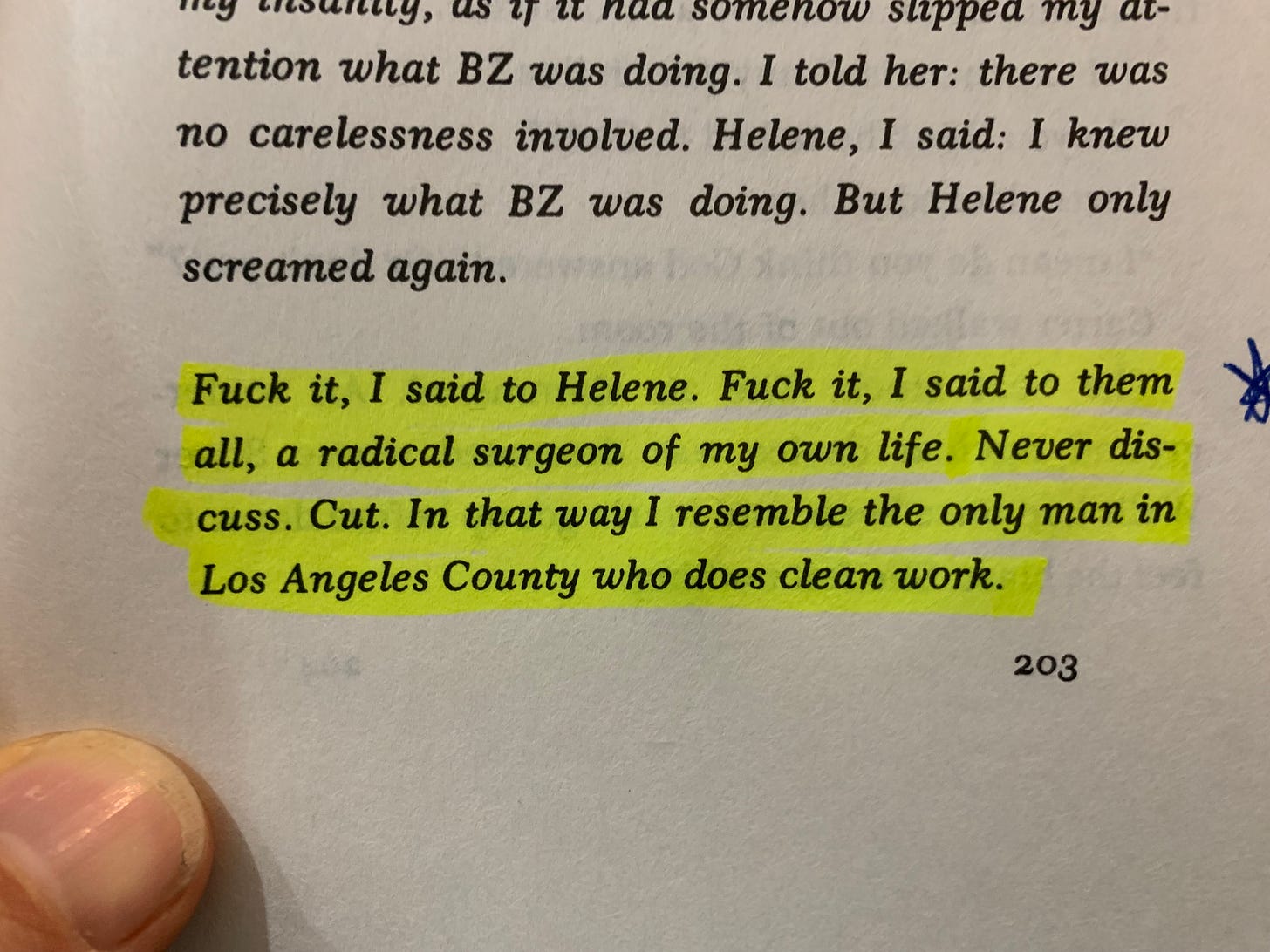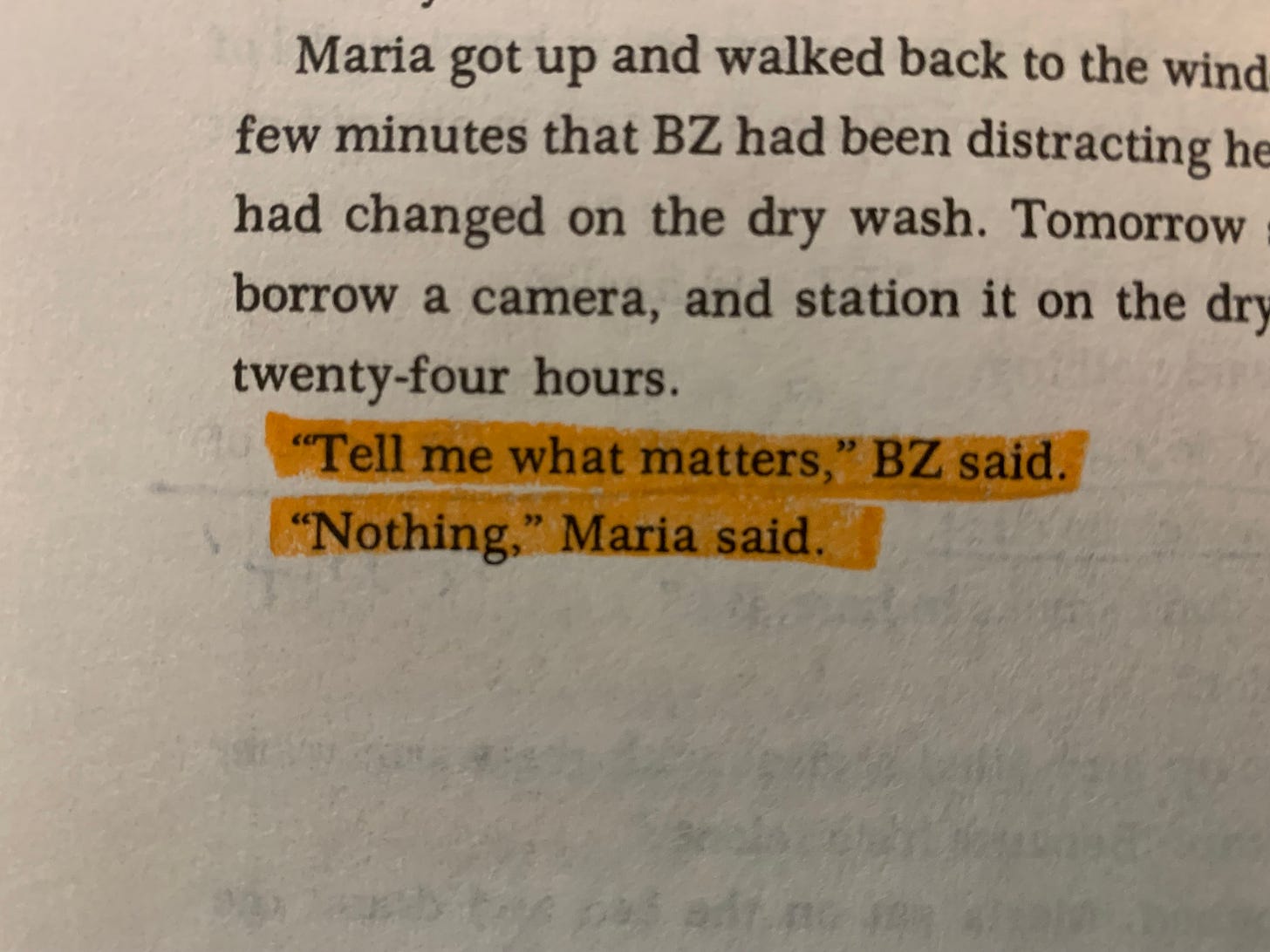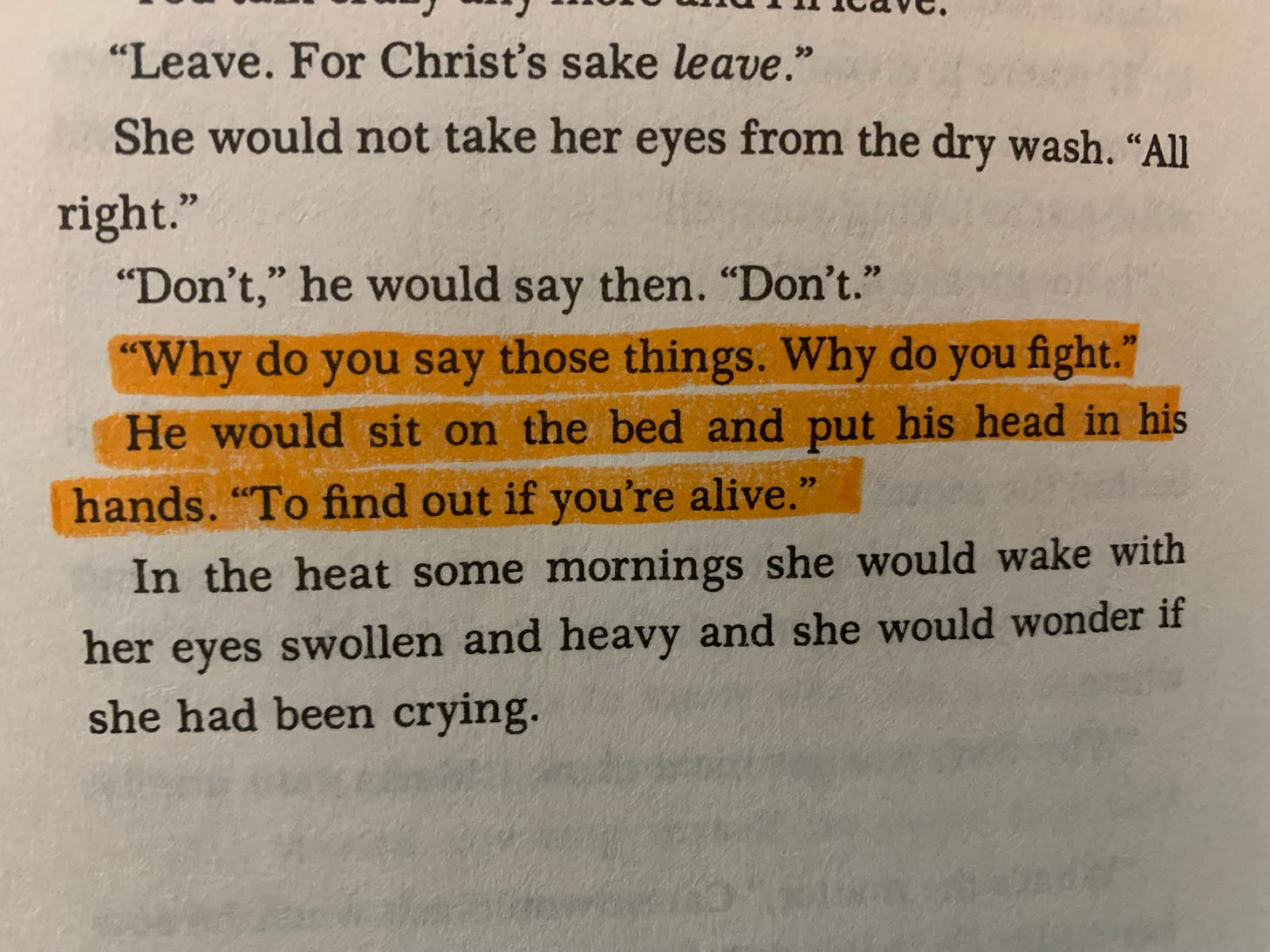Didion's "Play It As It Lays" (1970): Random Thoughts
No plot. Tight Style. The search for Self.
I think Didion was, no question, some kind of genius. A genius of diamond-tight style. A genius of probing by using awkward silence, by listening, observing, seeing. She was a writer with profound vision. Inner vision. Outer vision. She saw the world as it actually was, according to her own unique, paranoid point of view. She didn’t reach for safety or popularity or sounding good. She actually, sincerely wanted to communicate with readers. She truly, wholeheartedly wanted to explain her mind and the life of a human being as she understood it.
~
I finished Play It As It Lays, Didion’s second (1970) novel. 213 pages with very simple, clear language and a lot of white space. I’d give it maybe a 6.5-7/10. You can see the raw talent, for sure. No plot, really. Just sort of random little anecdotes. A strange mixture of Bret Easton Ellis’s Less Than Zero meets Albert Camus’s The Stranger. Amorality. Pointlessness. Meaninglessness. Ennui. Bunch of rich white Hollywood people and their damaged, repressed anti-emotional lives. Not even intellectual. Just graceless. Tainted. Amoral.
The non-plot: Maria, a young woman in a loveless, tortured relationship with a Hollywood director tries to survive psychologically, not working, living in external ease while drowning in self-reproach and self-loathing. She fucks a random guy at a party and then steals his Ferrari and drives to Vegas where she gets arrested and ends up in jail. She threatens to kill herself. She obsesses over Carter, her lover-non-lover-slash-villain-slash-father-type. She takes endless variations of uppers. She becomes depressed. She takes random drives to Barstow, other areas of LA. She spends time with several other men for various non-reasons. She ends up in a psych ward. Life is indeterminant to her; she keeps mentioning that “things do not apply.” Nothing applies. Nothingness, in fact, is a crucial idea in the novel. She has reached into and tasted and digested her life, which is nothingness.
A level of Kafkian existential ennui we can all very much fathom today, particularly Gen Z, that vapid generation swimming in the soup bowl of iPhone digital monarchy.
No character seems to have any real inner purpose in life. No moral duty. No sound sense of self or even not-self. Just LA debauchery in the movie business. Sex, drugs and rock and roll. Everyone numbs out with legal and illegal speed in various forms. Domestic violence is portrayed as easy, fun, nasty and expected. Cheating on spouses is normal. The male chauvinism and sexism is casual and straightforward: The men simply tell the women who they are and what they should do. The word “cunt” is aimed by men at women multiple times. The writing style is crisp, clear and defined within the narrow limitations of Didion’s (then) Hemingway-meets-Paul-Auster method.
Snakes are omnipresent literally and figuratively. (As they are in almost all her books.) It feels very autobiographical but I don’t know how much of it actually is or isn’t. (Certainly there is some Didion in Maria (pronounced MA-RYE-A), the tortured, depressed, antisocial fucklet/protagonist of the story, if “story” is even the correct word here.) Mental illness plays a large role. Psych wards. The voice is confident if somehow being both rock-hard and timid at the same time. Physical details are aplenty. Concrete details, we call them. Didion loves using the five senses, particularly smell. A good way to place readers there, but also now an overused trope/tool for writers.
The landscapes of desert California: Barstow, Vegas, Los Angeles, the brush and plants and flatness, all feel very authentic. An obsession with a daughter, perhaps an adopted one? (Like in real life.) Maria: Skinny, hot, wearing a bikini in the supermarket, followed by and yelled at by a pre-Depression-era older lady, shocked at Maria’s lack of moral decency. Even a gangbang is mentioned once, “12 cocks.” A funny thing, a plotless novel. Just short, tight fragments. Fastness. Ease. Prose so gem-hard and straight the language reads transparently and you see the meaning underneath.
No big $100 words for the bland sake of “stylish diction” or “style” in general. (Never really the point of good writing. Think again of Orwell’s Rules for English.) Even though I used to read The New Yorker religiously, and I respect their style guide, the prose often did feel stilted and too pretty to me.
Didion, of course, was known (she died a couple years ago at 87) primarily for her brilliant nonfiction, especially covering the 1960s and 1970s: Slouching Towards Bethlehem; The White Album; but also later books like her memoir, The Year of Magical Thinking. In this regard she makes me think of James Baldwin, an excellent, powerful nonfiction writer but a less potent novelist. Don’t get me wrong: Play It As It Lays is not a bad piece of work. There is a voice. We do get pulled in. The world she creates on the page does feel real. We see it, touch it, taste it, smell it, hear it.
And yet this novel felt too short, too underdeveloped, too anecdotal, too string-and-bones. I wanted more meat. It lacked protein. That said: It’s still Didion, and that means it’s solid on at least a few basic levels. Because she’s simply steeped in talent. Because her prose is dangerous, especially for that era. Because she plays with our moral sense of honesty. Because she challenges the status quo, makes the conventional bourgeoise redden and look away. Because she tries to be honest.
That’s a lot more than I can say for most contemporary writers. She actually attempts—however sloppily—to render the world in some form or shape as being a representation of “the way things are.” That is impossible today because as a broad culture we simply cannot agree on “how things actually are,” which is a profound statement in and of itself. And so, having lost a shared cultural identity, we can’t write accurately and honestly about life as Didion did in 1970, or even as Bret Easten Ellis did a decade later in Less Than Zero.
The 1990s and early 00s were probably the ending of all that. Now we just get mostly (but not entirely!) ideological formulaic drivel which panders to the mass of modern day book readers: Mostly rich white young women who love to complain online about how hard The American White Woman’s Problems in America in 2025 Are. (A tactless satire if you know anything about history at all.)
Didion was still finding herself as a writer in 1970, when she was just 36 years old. The talent was there. The full tapestry of skills was inchoate. The use of language like a scalpel doing interior spiritual surgery was just getting going, on the fiction front; it had been done already in her nonfiction reporting.
I think Didion was, no question, some kind of genius. A genius of diamond-tight style. A genius of probing by using awkward silence, by listening, observing, seeing. She was a writer with profound vision. Inner vision. Outer vision. She saw the world as it actually was, according to her own unique, paranoid point of view. She didn’t reach for safety or popularity or sounding good. She actually, sincerely wanted to communicate with readers. She truly, wholeheartedly wanted to explain her mind and the life of a human being as she understood it.
Isn’t that the best any good writer can offer?







